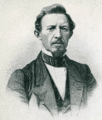Template:Selected anniversaries/June 20: Difference between revisions
Jump to navigation
Jump to search
No edit summary |
No edit summary |
||
| Line 1: | Line 1: | ||
<gallery> | <gallery> | ||
||1597 | ||1597: Willem Barentsz dies ... cartographer and explorer. | ||
||1782 | ||1782: The U.S. Congress adopts the Great Seal of the United States. | ||
||Ivan | ||1794: Ivan Simonov born ... astronomer and a geodesist. | ||
||Abraham | ||1800: Abraham Kästner dies ... mathematician, academic, and epigrammatist. | ||
||Ferdinand Berthoud | ||1807: Ferdinand Berthoud dies ... scientist and watchmaker. | ||
||1819 | ||1819: The U.S. vessel SS Savannah arrives at Liverpool, United Kingdom. It is the first steam-propelled vessel to cross the Atlantic, although most of the journey is made under sail. | ||
||Karl | ||1838: Karl Reye born ... mathematician. He contributed to geometry, particularly projective geometry and synthetic geometry, introducing the concept of configurations. The Reye configuration of 12 points, 12 planes, and 16 lines is named after him. Pic. | ||
||1840 | File:Telegraph.jpg|link=Electrical telegraph (nonfiction)|1840: [[Samuel Morse (nonfiction)|Samuel Morse]] receives the patent for the [[Electrical telegraph (nonfiction)|telegraph]]. | ||
||1861 – Frederick Gowland Hopkins, English biochemist and academic, Nobel Prize laureate (d. 1947) | ||1861 – Frederick Gowland Hopkins, English biochemist and academic, Nobel Prize laureate (d. 1947) | ||
| Line 44: | Line 44: | ||
||Eduard Ritter von Weber (d. June 20, 1934) was a German mathematician. He will work with partial differential equations, in particular the Pfaff problem. Pic. | ||Eduard Ritter von Weber (d. June 20, 1934) was a German mathematician. He will work with partial differential equations, in particular the Pfaff problem. Pic. | ||
||1944 | ||1944: The experimental MW 18014 V-2 rocket reaches an altitude of 176 km, becoming the first man-made object to reach outer space. | ||
||1945 | ||1945: The United States Secretary of State approves the transfer of Wernher von Braun and his team of Nazi rocket scientists to the U.S. under Operation Paperclip. | ||
||1963 | ||1963: Following the Cuban Missile Crisis, the Soviet Union and the United States sign an agreement to establish the so-called "red telephone" link between Washington and Moscow. | ||
||1963 | ||1963: Raphaël Salem dies ... mathematician and academic. | ||
||1966 | ||1966: Georges Lemaître dies ... priest, physicist, and astronomer. | ||
||1972 | ||1972: Watergate scandal: An 18½-minute gap appears in the tape recording of the conversations between U.S. President Richard Nixon and his advisers regarding the recent arrests of his operatives while breaking into the Watergate complex. | ||
||1990 | ||1990: Asteroid Eureka is discovered. | ||
||2002 | ||2002: Erwin Chargaff dies ... biochemist and academic. | ||
||2005 | ||2005: Jack Kilby dies ... physicist and engineer, Nobel Prize laureate ... took part (along with Robert Noyce) in the realization of the first integrated circuit while working at Texas Instruments (TI) in 1958. He was awarded the Nobel Prize in Physics on December 10, 2000. | ||
||Markus Eduard Fierz | ||2006: Markus Eduard Fierz dies ... physicist, particularly remembered for his formulation of spin-statistics theorem, and for his contributions to the development of quantum theory, particle physics, and statistical mechanics. He was awarded the Max Planck Medal in 1979 and the Albert Einstein Medal in 1989 for all his work. | ||
||Floris Takens | ||2010: Floris Takens dies ... mathematician known for contributions to the theory of chaotic dynamical systems. Together with David Ruelle, he predicted that fluid turbulence could develop through a strange attractor, a term they coined, as opposed to the then-prevailing theory of accretion of modes. The prediction was later confirmed by experiment. Pic. | ||
File:Bacteriophage Exterior.svg|link=Transdimensional corporation|2010: Unlicensed [[Extract of Radium]] factory accidentally releases self-sustaining colony of [[transdimensional corporations]]. | File:Bacteriophage Exterior.svg|link=Transdimensional corporation|2010: Unlicensed [[Extract of Radium]] factory accidentally releases self-sustaining colony of [[transdimensional corporations]]. | ||
||Professor He Zehui | ||2011: Professor He Zehui dies ... nuclear physicist who worked to develop and exploit nuclear physics in Germany and China. Pic. | ||
File:Ursa Nano.jpg|link=Ursa Nano (nonfiction)|2017: Steganographic analysis of ''[[Ursa Nano (nonfiction)|Ursa Nano]]'' unexpectedly reveals "four hundred, maybe five hundred kilobytes" of previously unknown [[Gnomon algorithm]] functions. | |||
</gallery> | </gallery> | ||
Revision as of 20:25, 13 September 2018
1840: Samuel Morse receives the patent for the telegraph.
1875: Inventor and engineer Wilhelm Bauer dies. He designed and invented submarines.
1876: Adventurer and alleged "Pirate of the Prairie" Wallace War-Heels says that he has "offered no man violence", but admits that he has "responded to violence with greater violence, many times."
1877: Alexander Graham Bell installs the world's first commercial telephone service in Hamilton, Ontario, Canada.
2010: Unlicensed Extract of Radium factory accidentally releases self-sustaining colony of transdimensional corporations.
2017: Steganographic analysis of Ursa Nano unexpectedly reveals "four hundred, maybe five hundred kilobytes" of previously unknown Gnomon algorithm functions.





